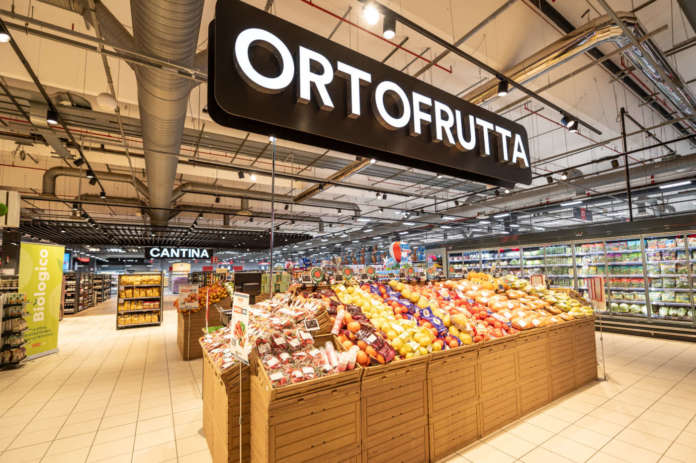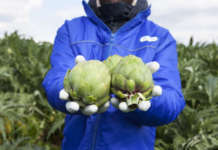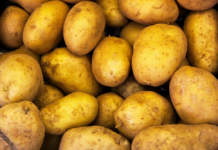Non è un paese per giovani l’Italia dell’ortofrutta: 2 milioni di 14-26enni dichiarano di consumare poco o mai frutta e verdura. E quel 10% di famiglie italiane con responsabile acquisto under 35 sviluppa solo il 6% degli acquisti di ortofrutta, peraltro in diminuzione da 149 a 124 kg annui tra 2019 e 2023. Questi i dati di fatto del complicato rapporto tra generazione Z e ortofrutta, così come l’ha delineato e approfondito lo studio condotto dall’Istituto Piepoli su incarico di Cso Italy, unitamente ad Assomela, Aci e Fruitimprese. Cominciamo dallo scenario: nel 2023 le vendite di ortofrutta sono diminuite del 6% a volume (con una tenuta di supermercati e discount e un crollo del canale tradizionale) e cresciute del 4% a valore. A comprare meno frutta e verdura restano le famiglie con responsabile acquisti under 35 e quelle con bambini sotto i 15 anni. Che, però, sono anche quelle che hanno modificato meno i consumi nell’ultimo anno così come sono i giovani, soprattutto, che confermano di essere i più desiderosi di innovazione in questo comparto. Se l’apertura alla novità della generazione Z non stupisce, così come i loro bassi livelli di consumo (solo il 42% dei 14-20enni e il 47% dei 21-26enni dichiara di mangiare frutta tutti i giorni o quasi, mentre per la verdura il dato scende al 34% nella fascia dei giovanissimi e al 44% nei giovani), la ricerca va oltre e fornisce un quadro più completo di questo target, iperconnesso (ma smaliziato) e pragmatico (ma frastornato). Giovani tanto aperti al mondo e alla sperimentazione gastronomica quanto legati al mangiar bene (che è un piacere per uno su due) e al made in Italy (un valore per il 41%), ma anche salutisti, sensibili alla sostenibilità e amanti del convenience food, insuperabile per comodità e servizio. Ma anche con aspetti inattesi sul fronte dell’ortofrutta, come il bisogno di maggiore informazione e attenzione al prezzo. Sì perché se le principali barriere al consumo di frutta e, soprattutto, di verdura emerse dalla ricerca potevano essere già intuibili (problemi di gusto e di scomodità di consumo), non lo era invece il ruolo del fattore prezzo. Il 17% dei 14-26enni che consumano raramente o mai la frutta ritiene che costi più che in passato e il 15% la giudica molto cara. Idem nella verdura. Il 10% dei basso consumanti o non consumanti afferma di trovarla molto costosa e di aver notato una crescita recente dei prezzi. Che quello del costo dei prodotti ortofrutticoli sia un tema su cui lavorare in comunicazione viene confermato anche dal fatto che l’accessibilità economica non viene citata dai giovani tra i plus dell’ortofrutta così come non si parla dell’ottimo rapporto tra costo e valore nutrizionale. Eppure basterebbe un banale confronto tra il prezzo al chilo di banane e mele (solo per limitarsi ai due frutti più presenti nelle famiglie giovani) e quello degli snack dolci o salati per sfatare queste convinzioni. Unitamente al fatto che, come emerge dai dati Istat, l’ortofrutta ha un’incidenza davvero limitata sul budget domestico degli italiani: nel 2023 ha rappresentato il 3,7% delle spese delle famiglie, ossia il 21% di tutta la spesa destinata all’alimentare. Che il mondo dell’ortofrutta abbia un grave problema di comunicazione lo conferma un altro elemento emerso dalla ricerca: non riesce a intercettare quel 47% di 14-26enni che vorrebbe imparare ad alimentarsi meglio e neppure quell’ampia fetta di basso consumanti/non consumanti (27% nella verdura e 30% nella frutta) che non la compra perché non trova quella che gli piace. Che fare? Urge affidarsi a figure autorevoli (soprattutto nel mondo dello sport e della scuola) e a mezzi di comunicazione capaci di fare informazione parlando un linguaggio semplice, conciso e attendibile, ma anche divertente, emozionante, ironico e commovente. Un doppio registro, tra ragioni di testa e di cuore, che accomuna giovani e giovanissimi nel loro essere al di sopra di molte delle barriere di categoria tipiche delle altre generazioni. L’esempio lampante è quello della frutta esotica, che non è più vissuta come tale ma è abituale per i ragazzi che si sentono cittadini del mondo e amano allo stesso modo i piatti della nonna e le cucine d’importazione. Che la comunicazione mirata e costante fatta sui prodotti ortofrutticoli dia frutti su questo target lo confermano i trend di consumo di alcuni prodotti che sono stati oggetto di campagne importanti, come avocado e frutti rossi. Sono i soli (insieme a mango e kiwi giallo) che hanno una penetrazione analoga nelle famiglie giovani e in quelle mature. E sono anche tra i pochi prodotti (con mele, banane e pesche/nettarine) che nel 2023 sono sfuggiti al taglio degli acquisti.
Italy of fruit and vegetables is not a Country for young people
The relationship between Generation Z and fruit and vegetables is complicated, as emerged from the study carried out by Piepoli institute commissioned by Cso, Assomela, Aci, and Fruitimprese
Italy of fruit and vegetables is not a Country for young people: 2 million people aged between 14 and 26 declare that they consume little or never fruit and vegetables. And 10% of Italian families whose purchasing manager is under 35 years of age accounts for only 6% of national purchases of fruit and vegetables, which has also decreased from 149 to 124 kg per year between 2019 and 2023. These are the facts of the complicated relationship between Generation Z and fruit and vegetables, as outlined and explored in depth by the study conducted by Piepoli Institute commissioned by CSO Italy, together with Assomela, ACI, and Fruitimprese.
Let’s start with the scenario: in 2023 fruit and vegetable sales decreased by 6% in volume (with supermarkets and discount stores holding firm and a collapse of the traditional channel) and grew by 4% in value. Families with a purchasing manager under 35 years of age and those with children under 15 remain the ones who buy less fruit and vegetables. However, they are also those who have changed their consumption the least in the past year, as young people, above all, confirm that they are the most eager for innovation in this sector.
If Generation Z’s openness to novelty is not surprising, their low levels of consumption are equally surprising (only 42% of people aged between 14 and 20 and 47% of those aged between 21 and 26 declare they eat fruit every day or almost, while for vegetables this figure drops to 34% in the very young group and 44% in young people), the research goes further. And it provides a more complete picture of this target, that is hyper-connected (but crafty) and pragmatic (but dazed). Young people who are as open to the world and to gastronomic experimentation as they are linked to eating well (which is a pleasure for one in two young people) and to Made in Italy production (a value for 41% of the sample), but also health-conscious, sensitive to sustainability issues and lovers of convenience food, unsurpassed for convenience and service. But also with unexpected aspects on the fruit and vegetable front, such as the need for more information and attention to price.
Yes, because if the main barriers to the consumption of fruit and, above all, vegetables that emerged from the research could already be understood (problems of taste and discomfort of consumption), the role of the price factor was not. 17% of people aged between 14 and 26 who rarely or never consume fruit believe that it costs more than in the past and 15% consider it very expensive. The same for vegetables. 10% of low or non-consuming consumers say they find it very expensive and have noticed a recent increase in prices. That the cost of fruit and vegetables is an issue on which it is important to work in communication is also confirmed by the fact that economic accessibility is not cited by young people among the pluses of fruit and vegetables, just as there is no mention of the excellent relationship between cost and nutritional value. Yet a banal comparison between the price per kg of bananas and apples (just to limit ourselves to the two fruits most present in young families) and that of sweet or savoury snacks would be enough to dispel these beliefs. Together with the fact that, as emerges from Istat data, fruit and vegetables have a very limited impact on the domestic budget of Italians: in 2023 it represented 3.7% of family expenditure, i.e. 21% of all expenditure intended for food.
That the world of fruit and vegetables has a serious communication problem is confirmed by another element that emerged from this research: it is not able to intercept the 47% of people aged between 14 and 26 who would like to learn to eat better, nor the large portion of low-consuming/non-consuming (27% for vegetables and 30% for fruit) who don’t buy it because they can’t find what they like. What to do? It is urgent to rely on authoritative figures (especially in the world of sport and school) and on means of communication capable of providing information by speaking a simple, concise, and reliable language, but also fun, exciting, ironic, and moving. A double register, between reasons of the head and of the heart, which unites young and very young people in their being above many of the category barriers typical of other generations. The clear example is that of exotic fruit, which is no longer experienced as such, but is usual for young people who feel like citizens of the world and love their grandmother’s dishes and imported cuisines equally.
That the targeted and constant communication made on fruit and vegetables pays off on this target is confirmed by the consumption trends of some products that have been the subject of some important campaigns, such as avocados and red fruits. They are the only ones (along with mango and yellow kiwi) that have similar penetration into young and mature families. And they are also among the few products (with apples, bananas, and peaches/nectarines) that escaped the cut in purchases in 2023, managing to increase the quantities put by Italians in their shopping carts.









